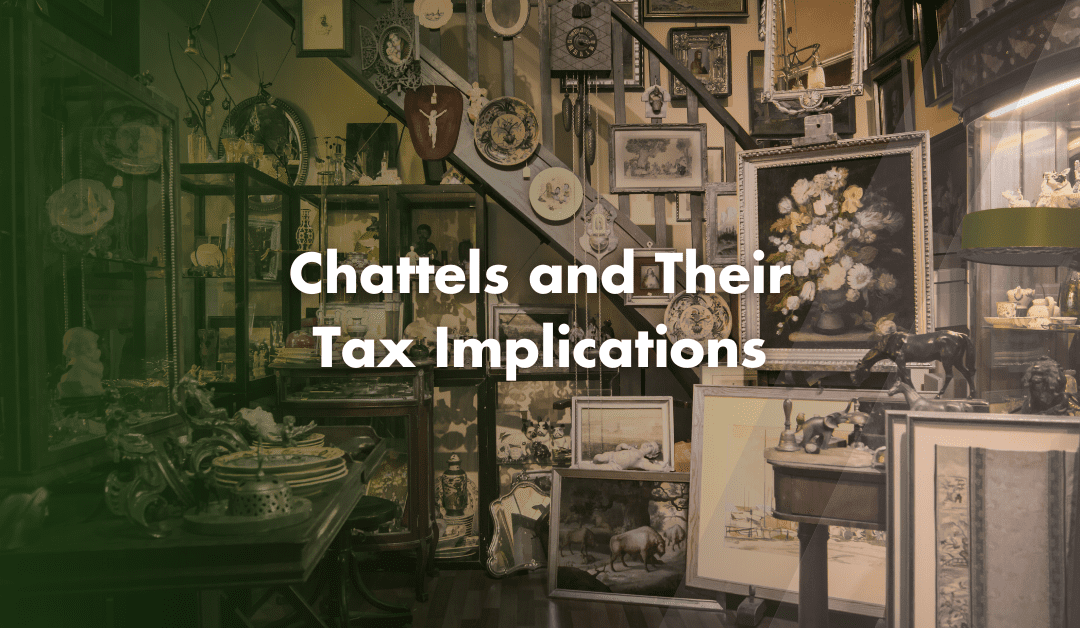Chattels and Their Tax Implications
Chattels are legally defined as ‘tangible movable property’, also referred to as Personal Property. These are physical items that can be touched and moved without altering the structure of a building or land.
Examples include artwork, antiques, jewellery, and even racehorses.
The distinction between movable and immovable property is crucial in taxation law, as it determines how an asset is treated under various tax regulations.
Wasting and Non-Wasting Chattels
Chattels are categorised further into wasting and non-wasting chattels based on their expected useful life:
- Wasting Chattels: These are items with a useful life not expected to exceed 50 years. Common examples include machinery, vehicles, and equipment. Interestingly, assets like clocks, boats and even some collectibles, despite potentially increasing in value over time, are considered wasting chattels. The gain from the sale of wasting chattels is exempt from Capital Gains Tax (CGT), making them particularly noteworthy for tax planning.
- Non-Wasting Chattels: These include items expected to last more than 50 years such as fine art, antiques, and certain jewellery pieces. The taxation of non-wasting chattels can vary significantly based on their sale price and the specifics of the transaction.
Tax Rules for Non-Wasting Chattels
The tax treatment for gains on non-wasting chattels hinges on the transaction value:
- Transactions under £6,000: The gain from the sale of non-wasting personal property where the proceeds/ financial gains are under £6,000 is not subject to Capital Gains Tax. For example: If you purchase a painting for £1,000 and sell it for £5,9000, the financial gain of £4,900 is exempt from further taxation.
- Calculating Losses: If a non-wasting personal property is sold for less than £6,000 but was purchased for more, the calculation of a financial loss is adjusted. The sale price is deemed to be £6,000 for the purpose of calculating the loss, reducing the allowable tax deduction.
- The 5/3 Rule: If personal property is sold for over £6,000 but was purchased for less than £6,000, calculate the gain two ways: traditionally and by multiplying the excess over £6,000 by 5/3. The taxable gain is the lesser of the two calculations, capping the tax liability.
Special Considerations
- Chattels Used in Trade: If a wasting personal property has been used in a trade and Capital Allowances have been claimed, the exemption from CGT does not apply. Instead, gains may lead to a balancing charge and taxation under CGT rules.
- Sets of Chattels: When disposing of a set of similar and complementary items, the £6,000 threshold applies to the set or group collectively rather than individually, which can affect the tax treatment of items sold together.
Contact Us
We are not just accountants; we are Chartered Accountants with one of the most reputable and premium accounting bodies. We are registered and regulated by ACCA; so you can rest assured that you are in good hands. Knowing this, don’t hesitate to get in touch with us if you require assistance: Pi Accountancy | Contact Us

